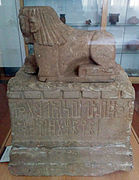The Secret of Thomas Mann’s Translator
A new novel about Thomas Mann’s longstanding American translator portrays a woman ahead of her time and, despite her shortcomings, important to leading Mann to a Nobel Prize.
托馬斯曼翻譯家的秘密
一部關於托馬斯·曼(Thomas Mann)長期擔任美國翻譯的新小說描繪了一位領先於時代的女性,儘管她有缺點,但對帶領曼獲得諾貝爾獎至關重要。
她採訪了家人,並查閱了約翰·C·瑟爾沃爾(John C. Thirlwall)寫的《用另一種語言》一書,講述了曼恩和洛波特之間的長期關係,其中包括她的兩篇關於翻譯的文章。 儘管洛·波特以自嘲的方式將翻譯稱為“這門小藝術”,但她完全不這麼認為。 她告訴訪談者,她不僅從一本字典開始,而是「一整套參考書架」(還有《浮士德博士》中的留聲機,用於重複播放貝多芬第 32 號鋼琴奏鳴曲、作品 111)。
She described days spent agonizing over her ability to do justice to Mann’s complex, nuanced prose, then, as she put it in her preface to “Buddenbrooks,” “transferring the spirit first and the letter so far as it might be.”
For Salas, “Mrs. Lowe-Porter” remained its own act of translation. In a letter to Time magazine in 1944, Mann was on his most decorous behavior as he expressed “the good fortune of finding a translator of the devotion and linguistic talent of Mrs. Helen Lowe-Porter.”
Salas wanted her novel to leave the two under warmer circumstances.
“Without Mrs. Lowe,” says Mann as he toasts his translator at one of their last dinner parties together in Princeton, “I am an unknown German only. To Helen Lowe-Porter!”



















![Classic Régence garden Sphinx in lead, Château Empain, the Parc d'Enghien [nl], Belgium](https://upload.wikimedia.org/wikipedia/commons/thumb/c/c0/Enghien_CHSph1JPG.jpg/190px-Enghien_CHSph1JPG.jpg)





